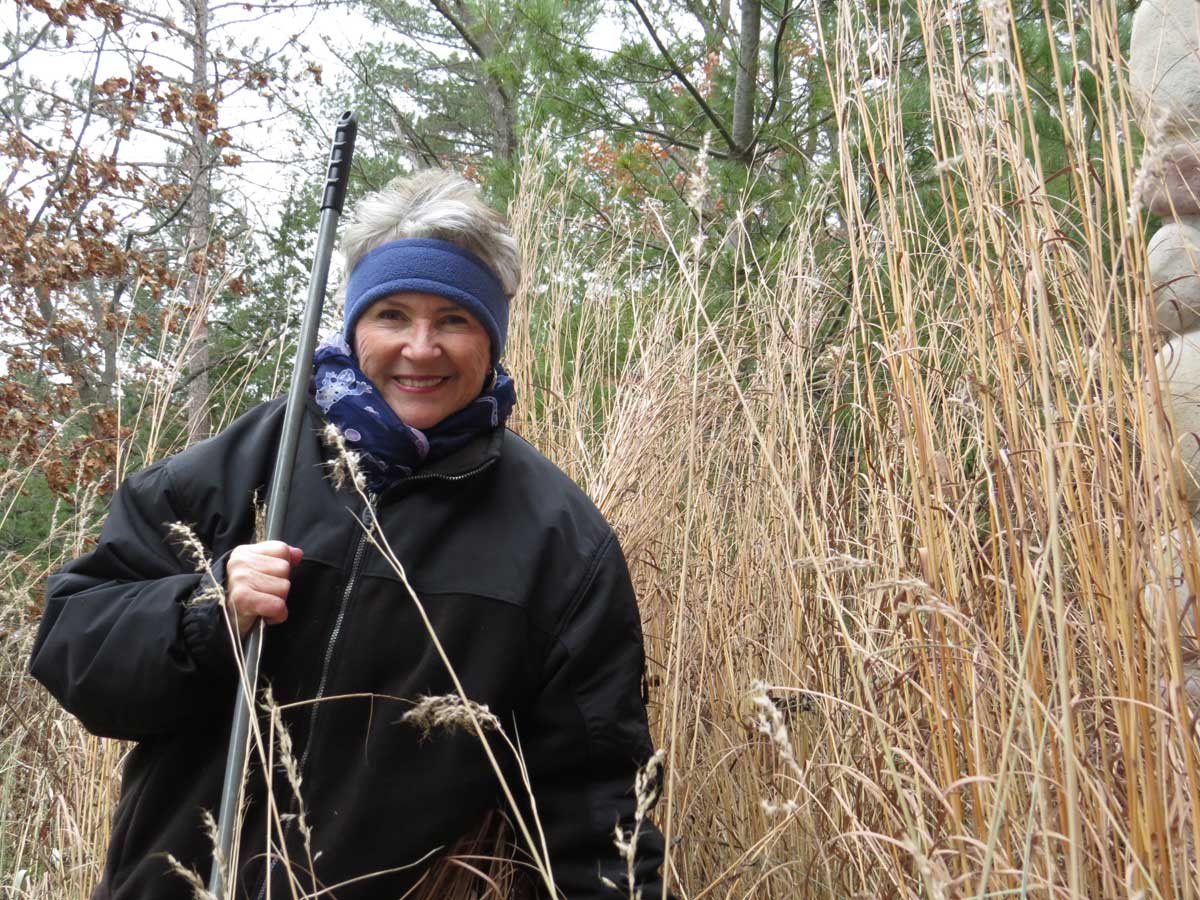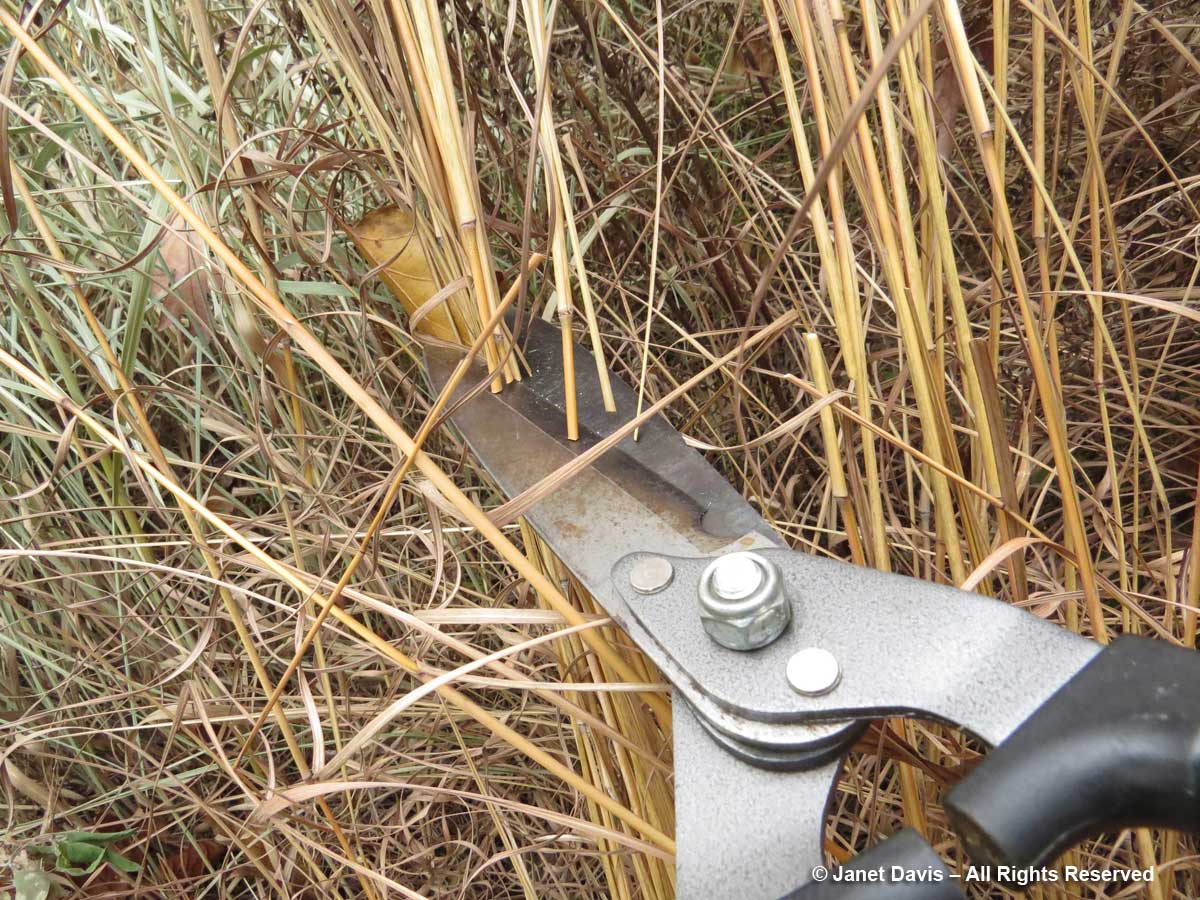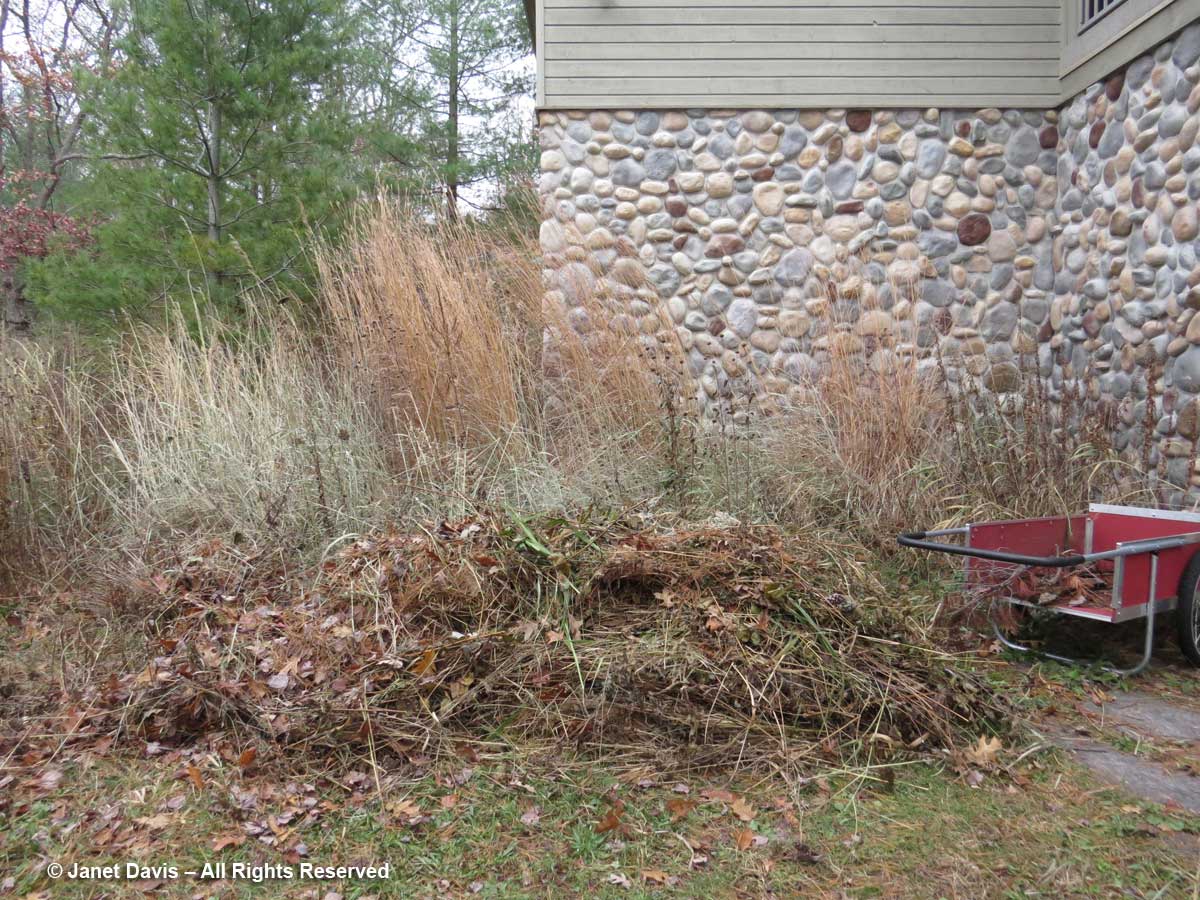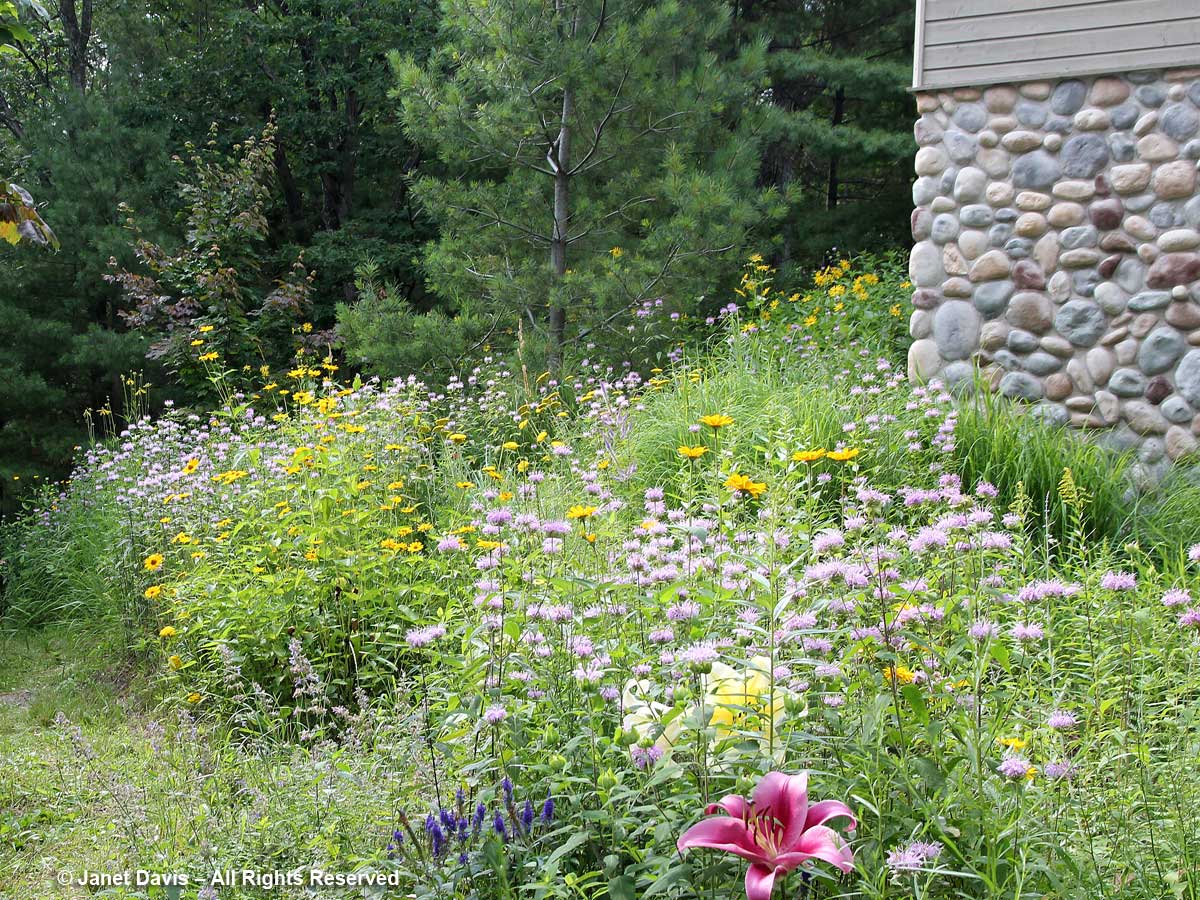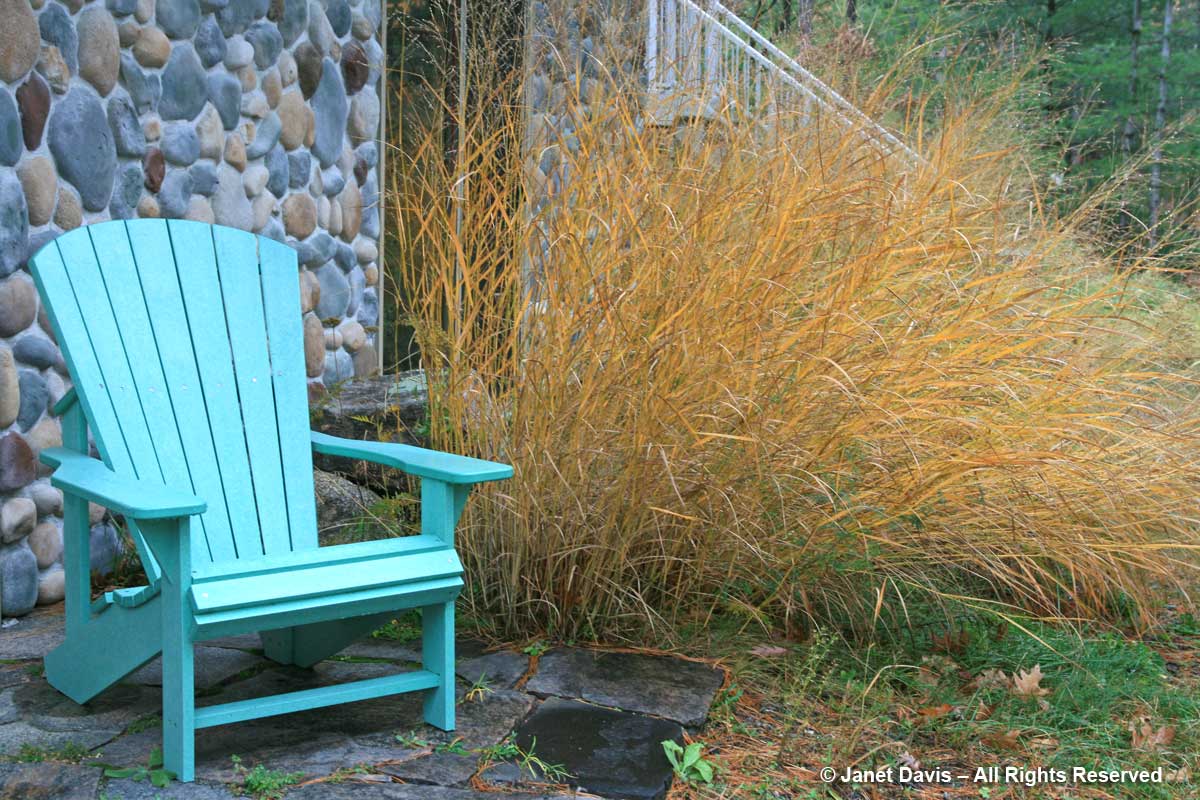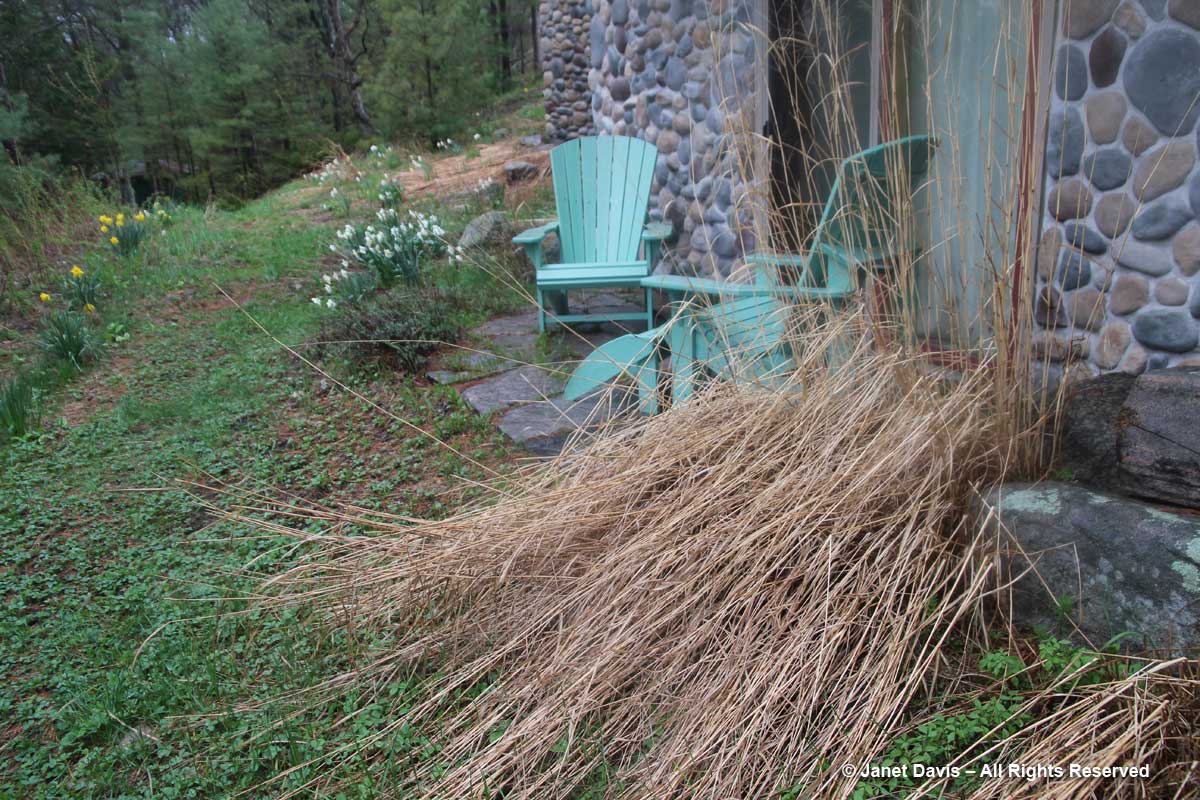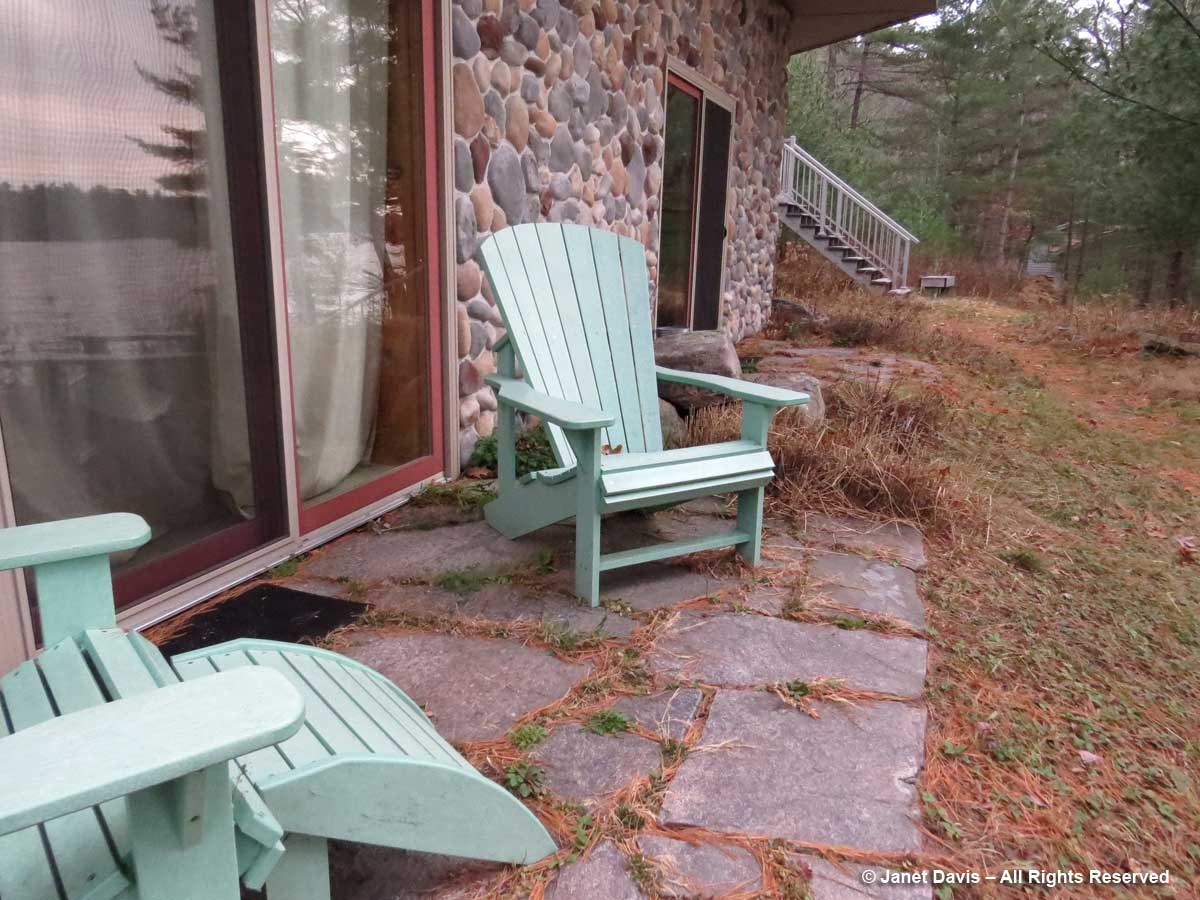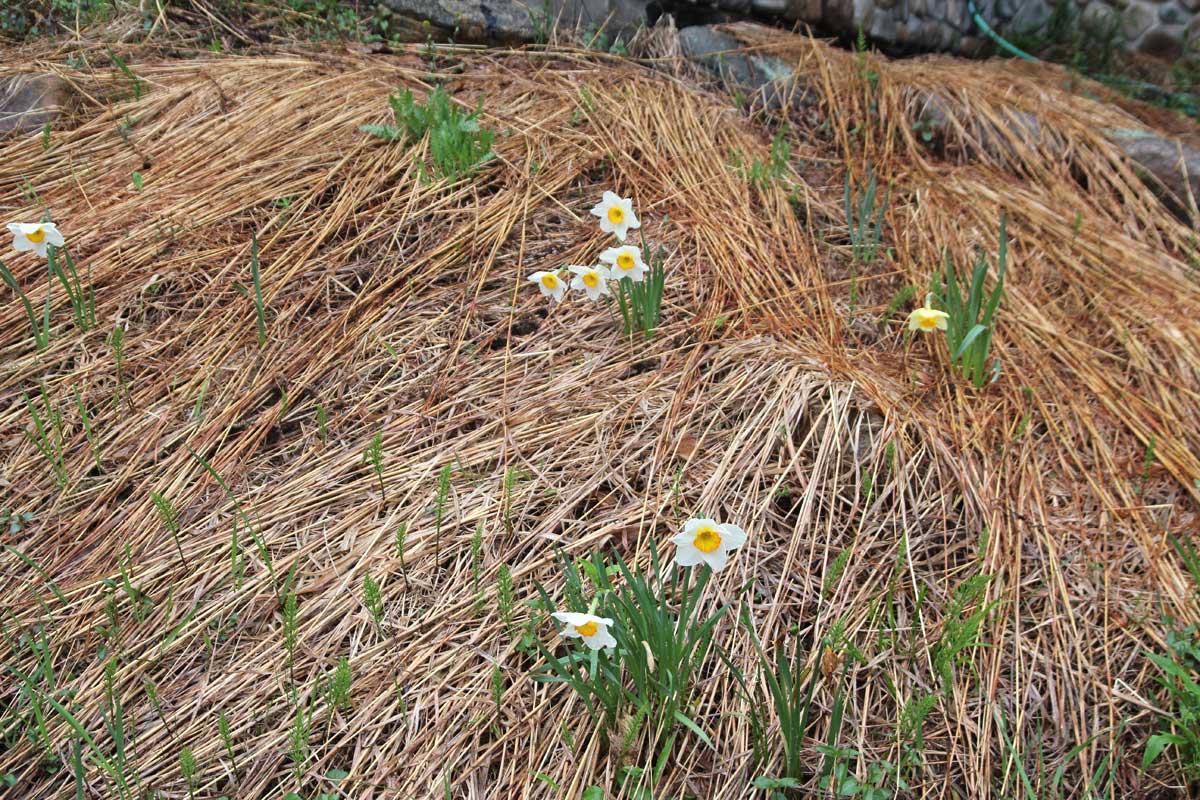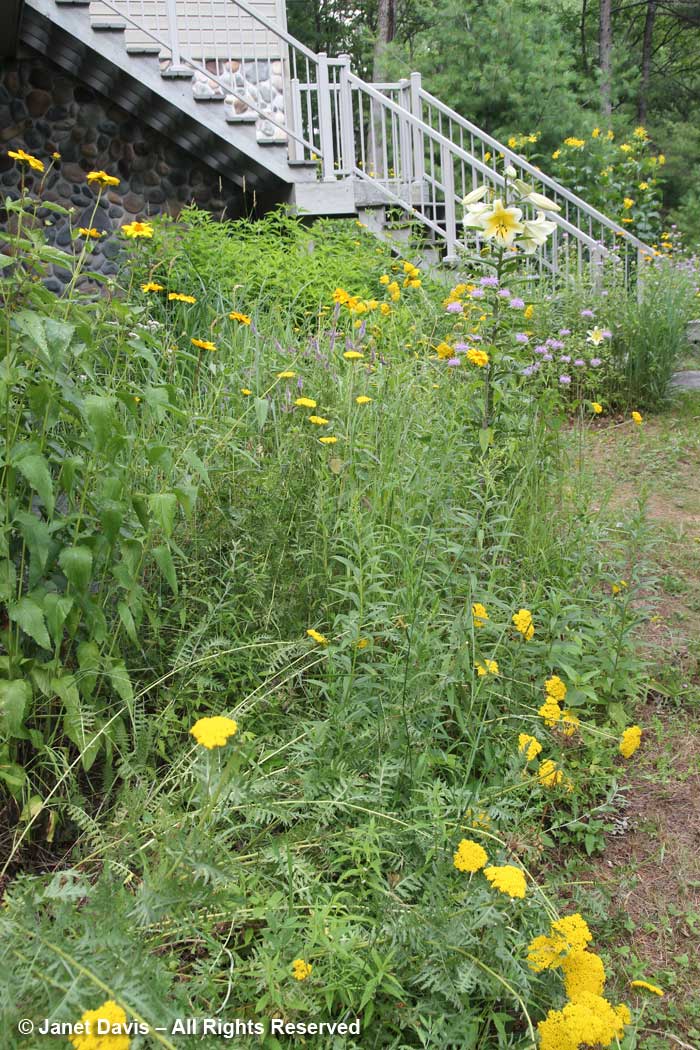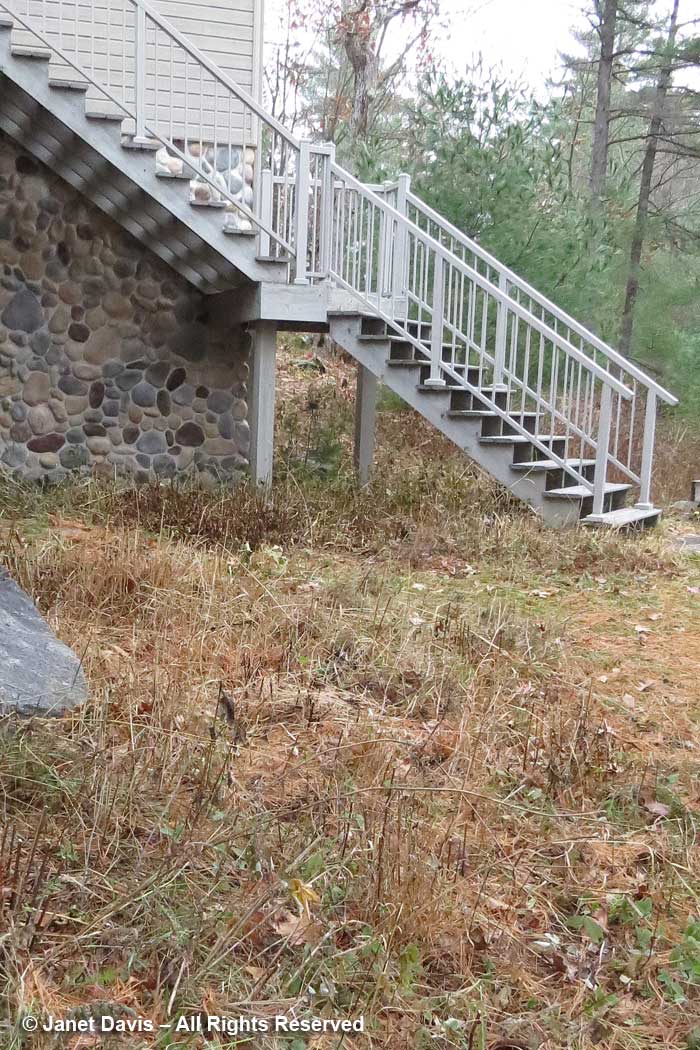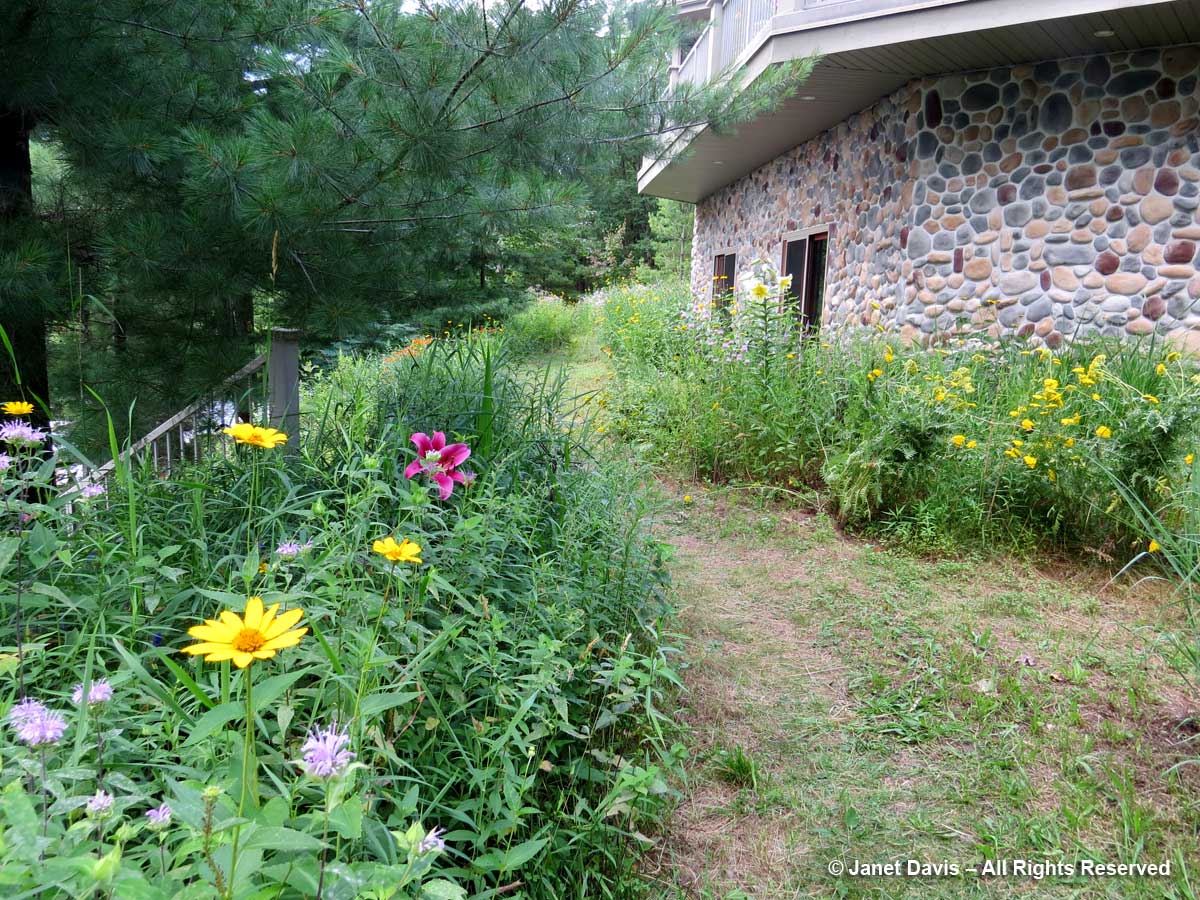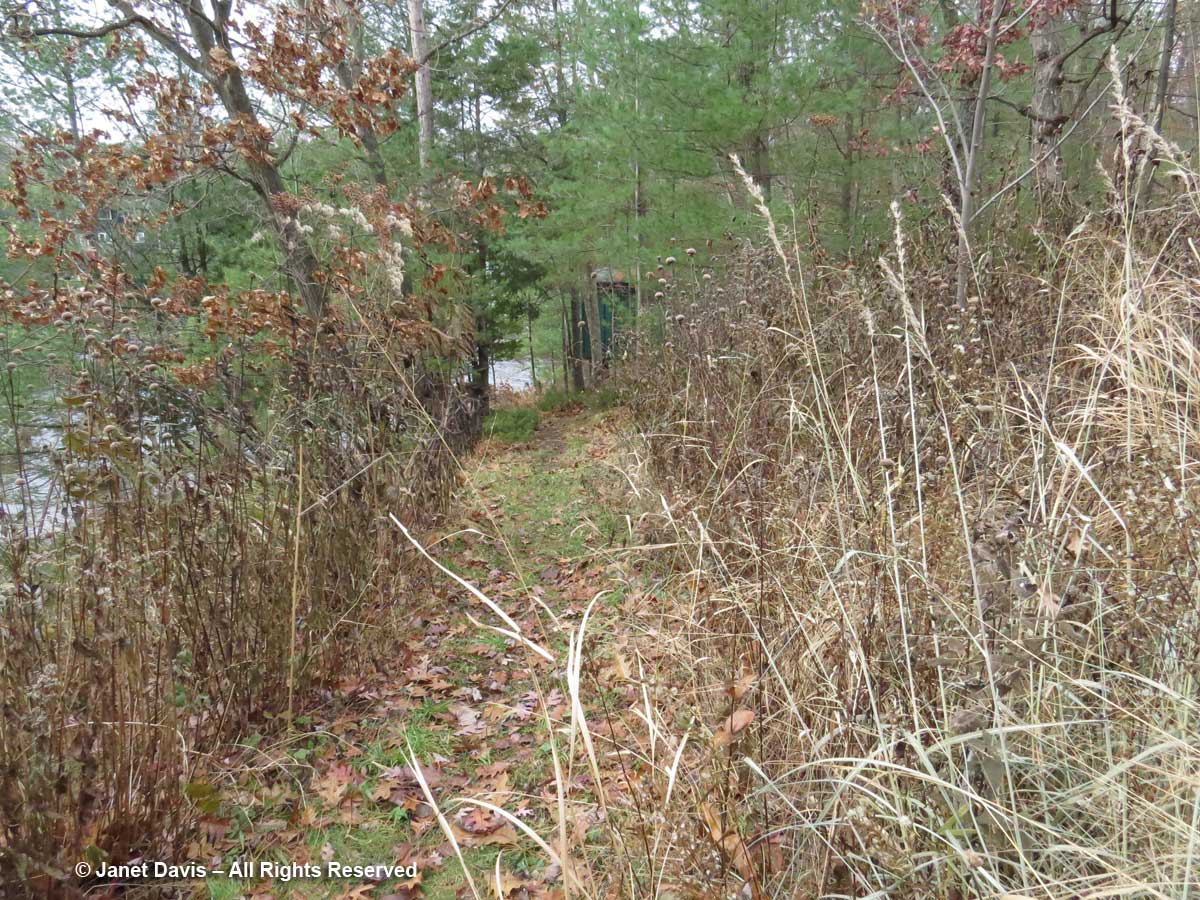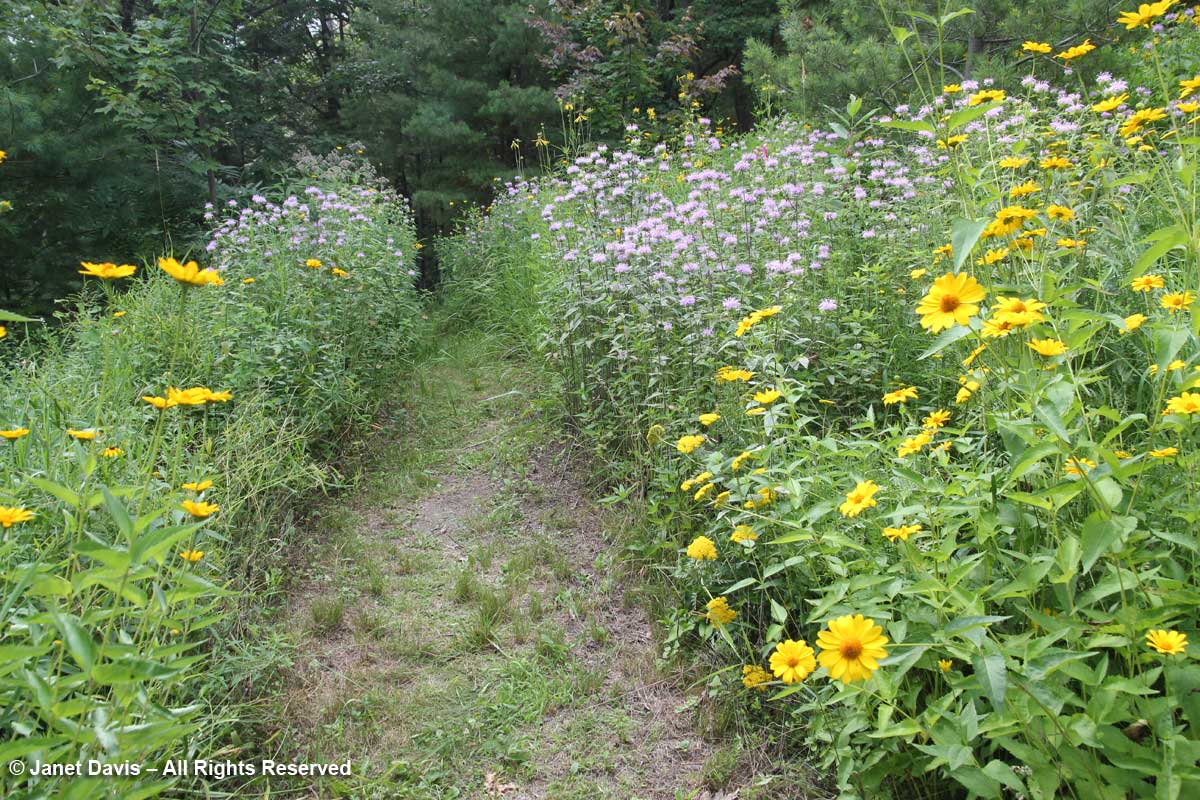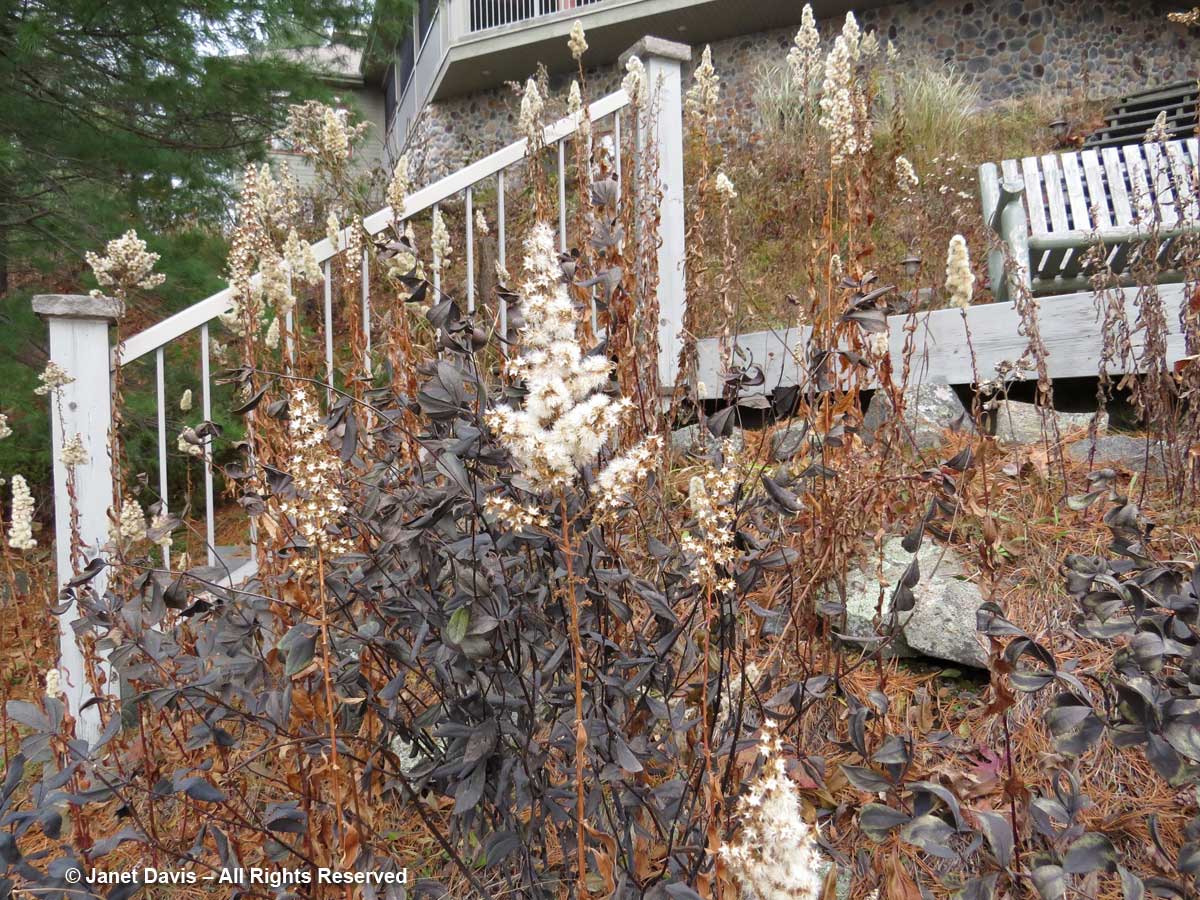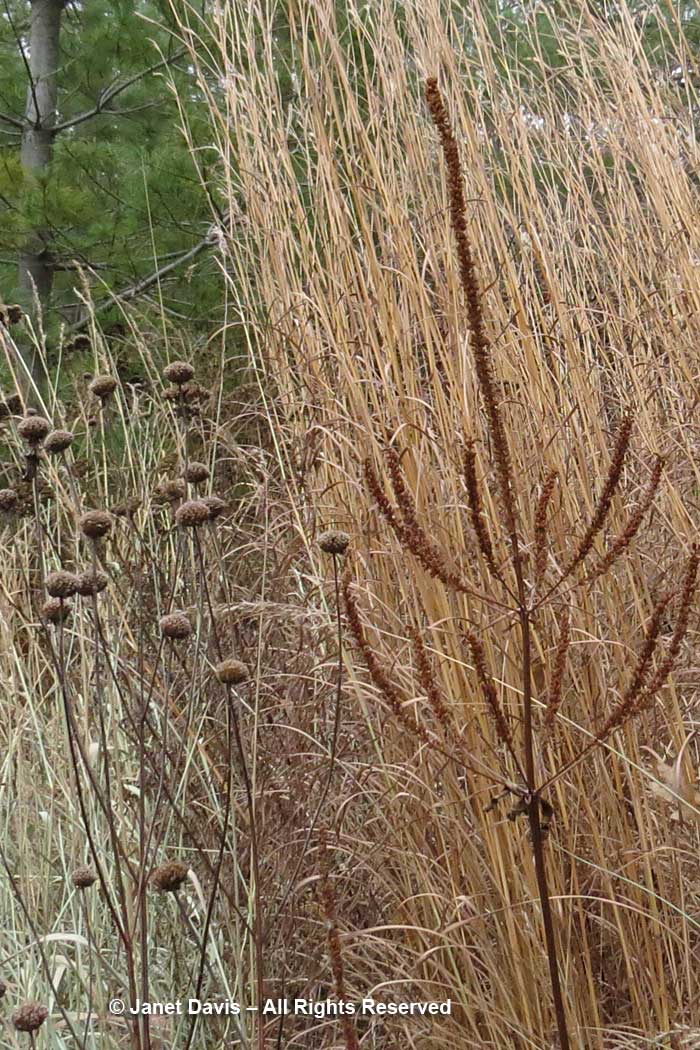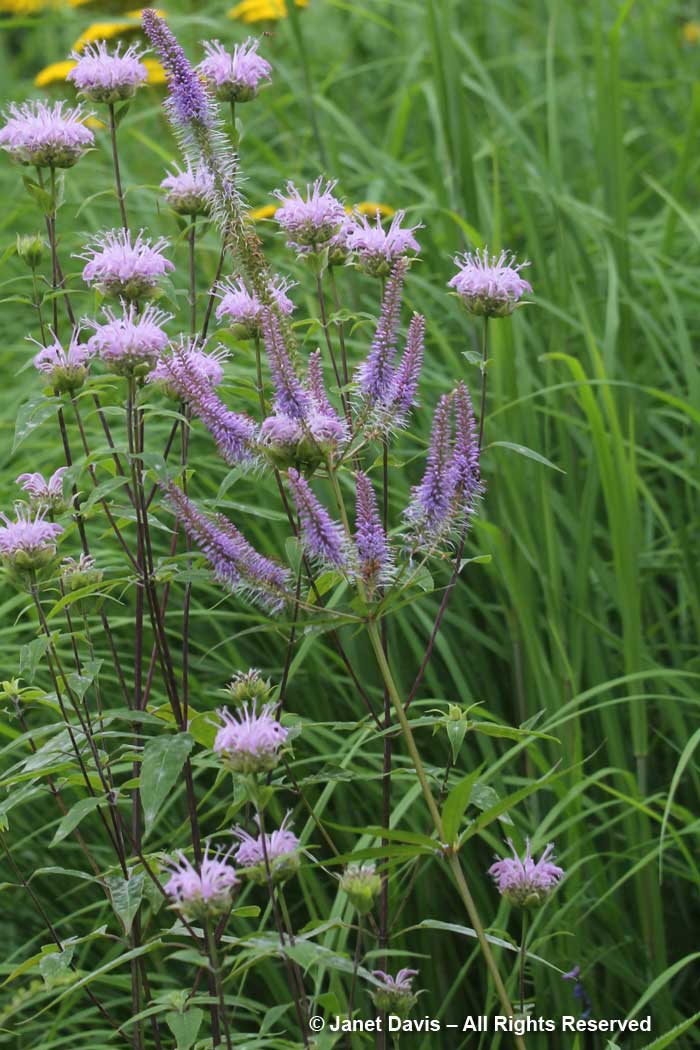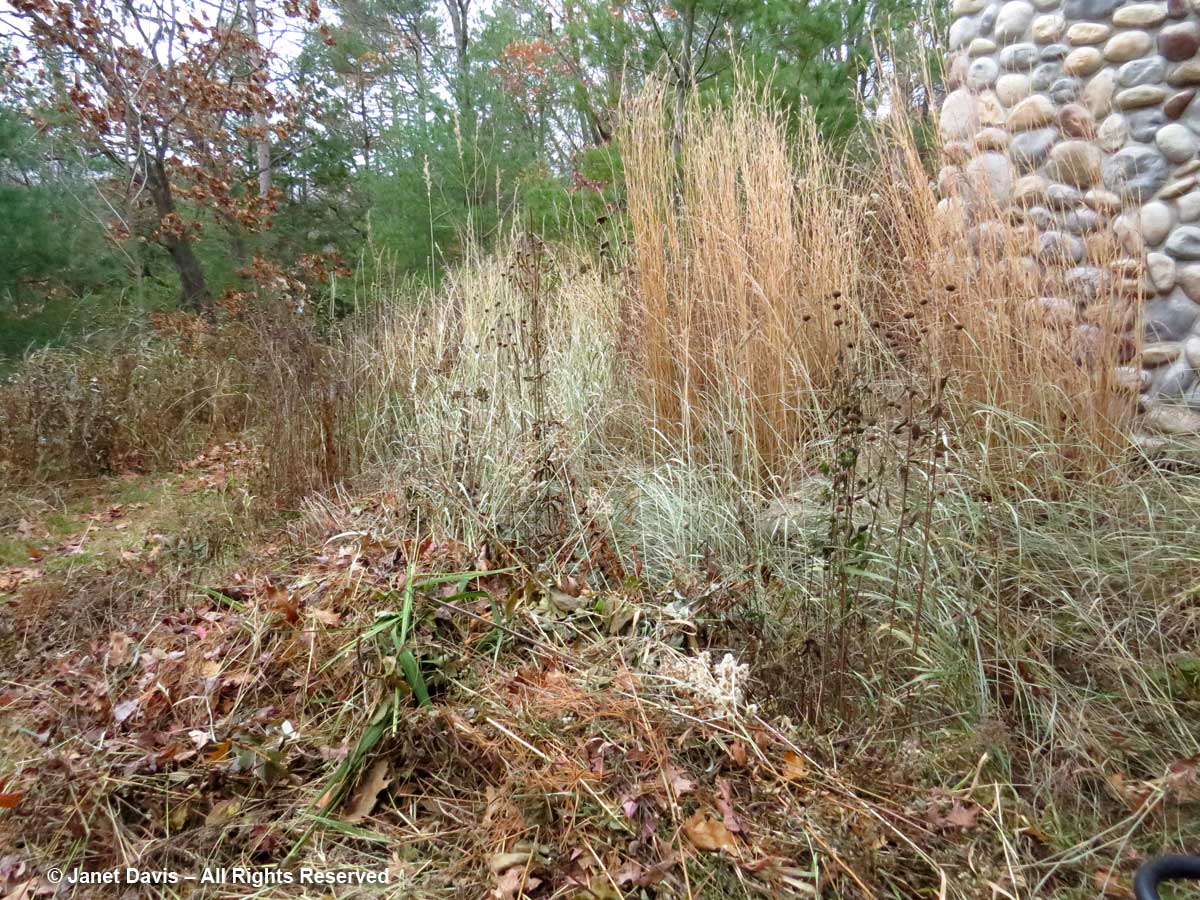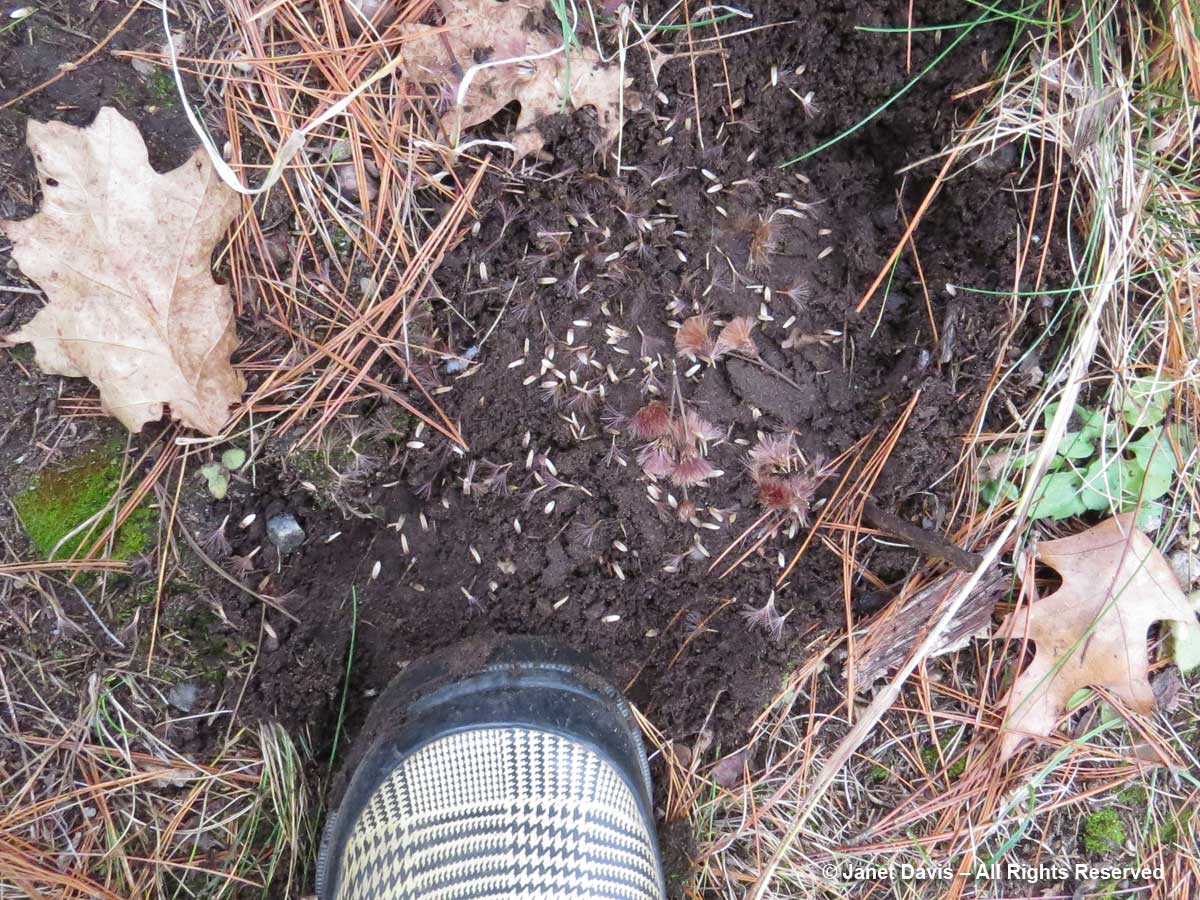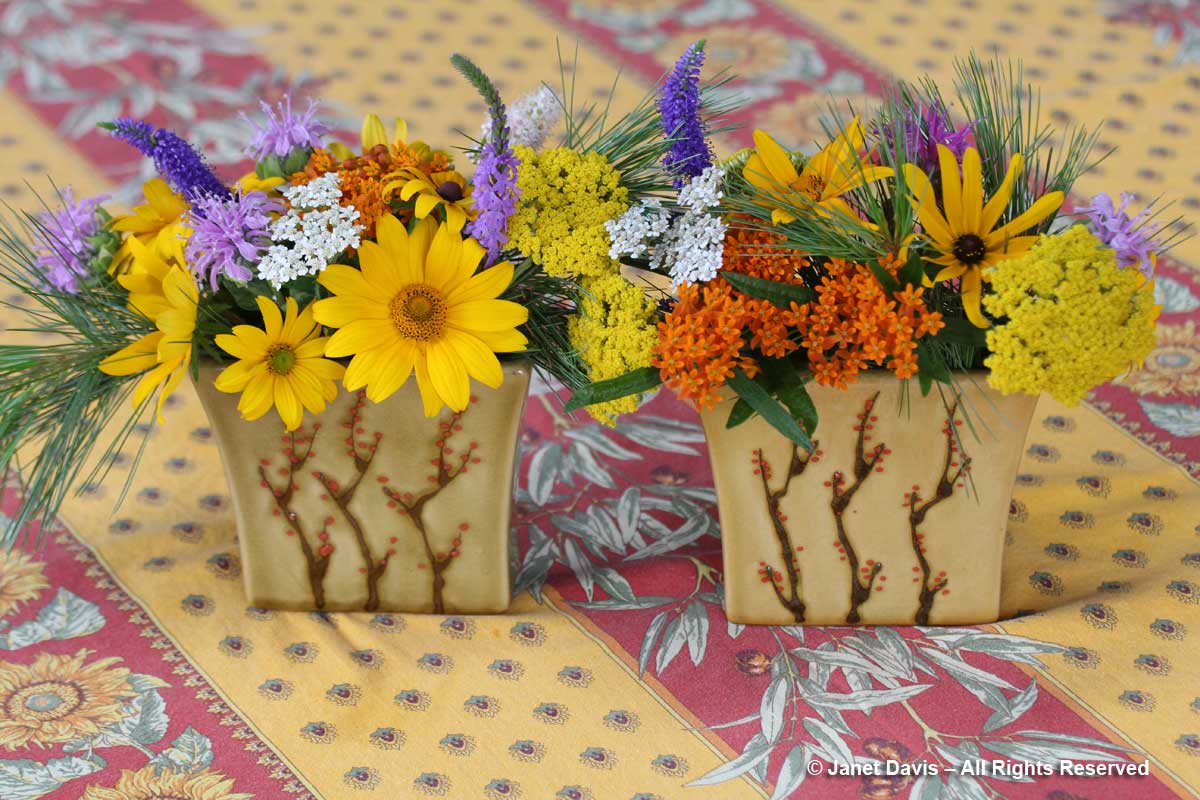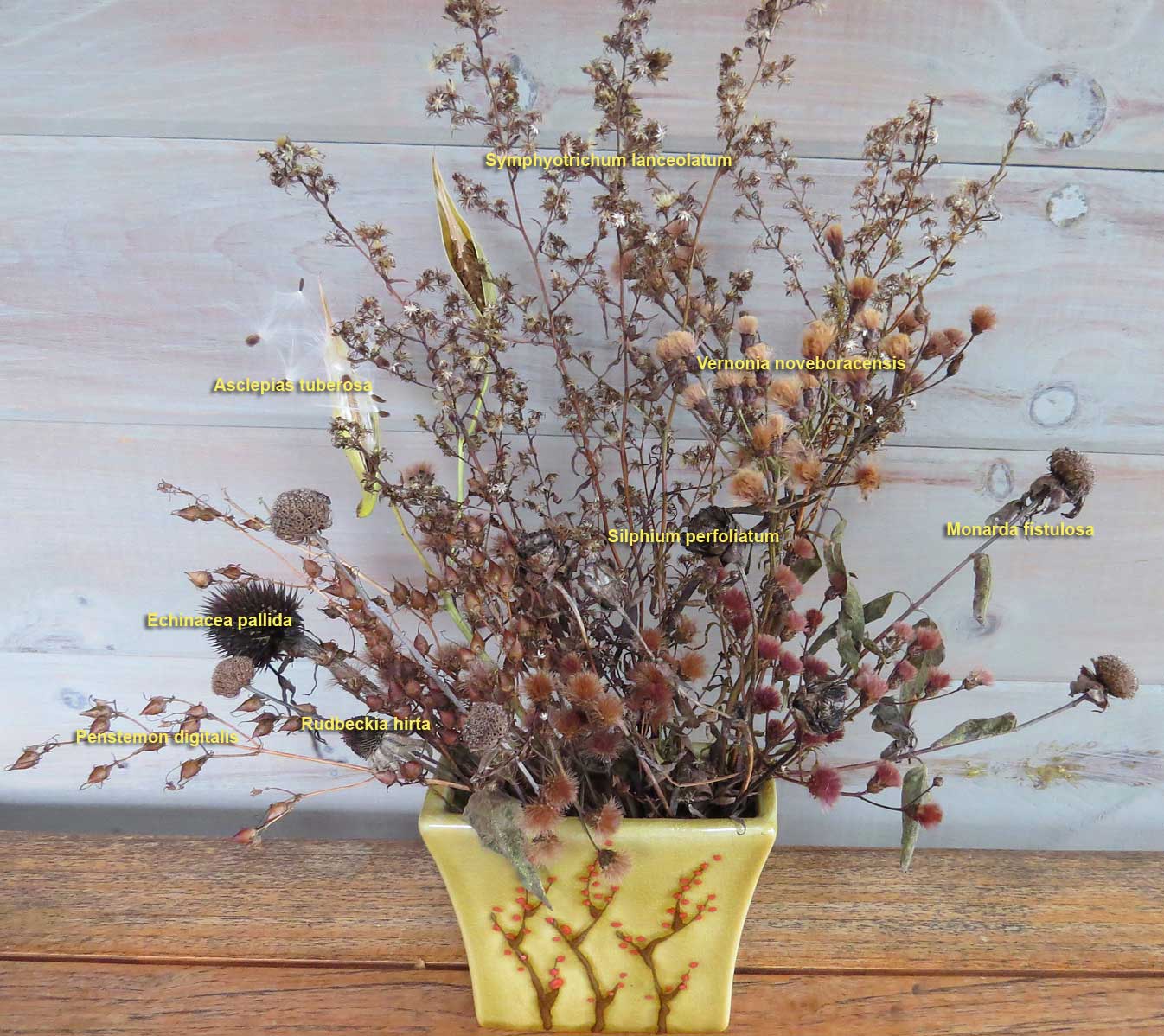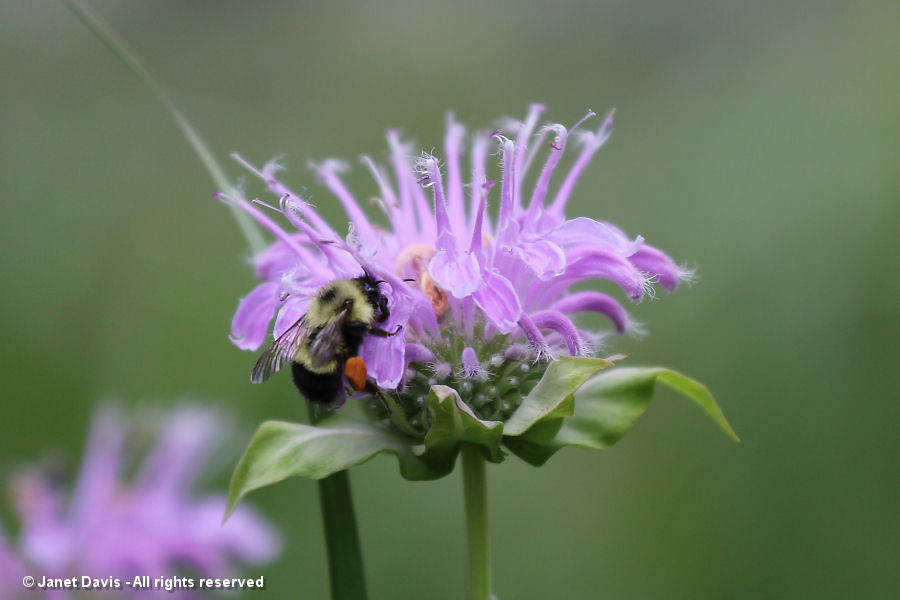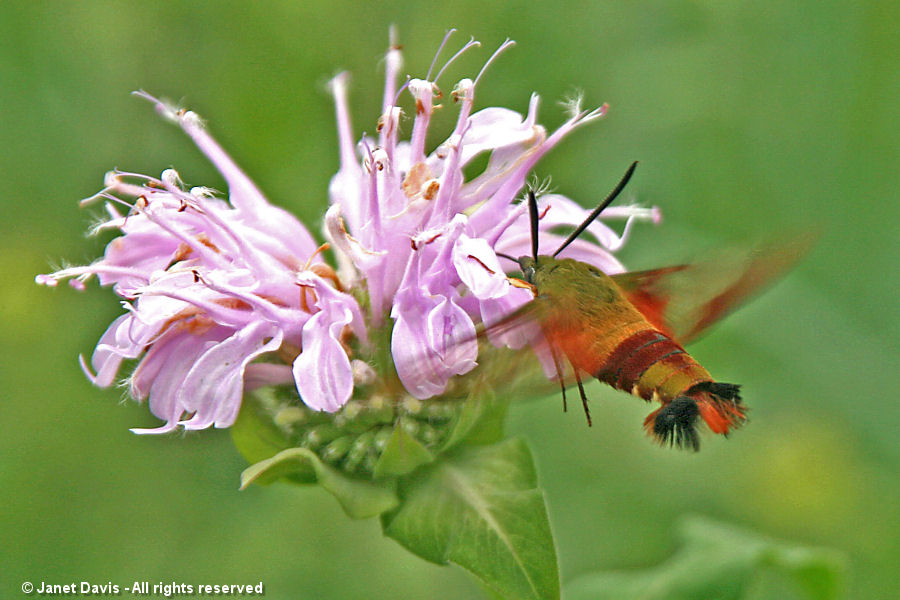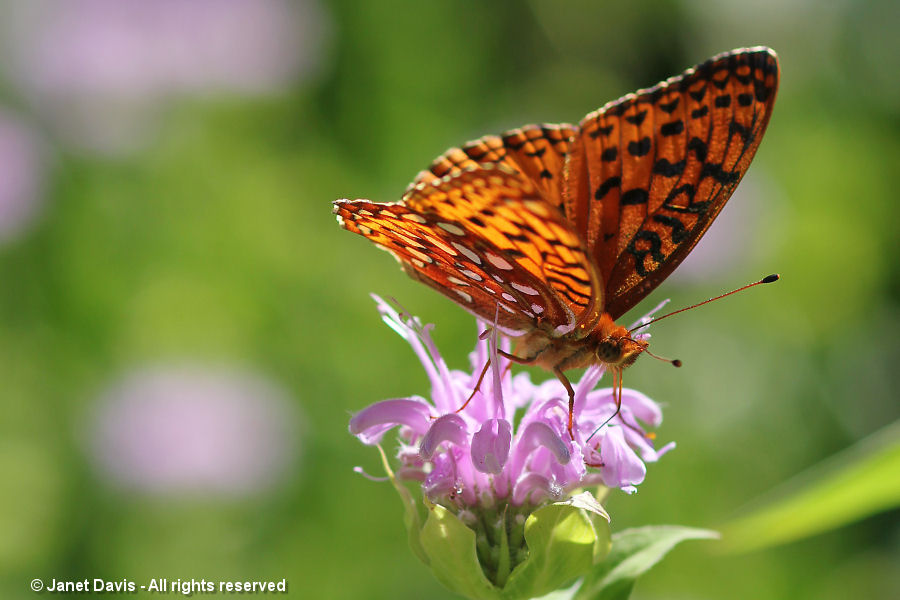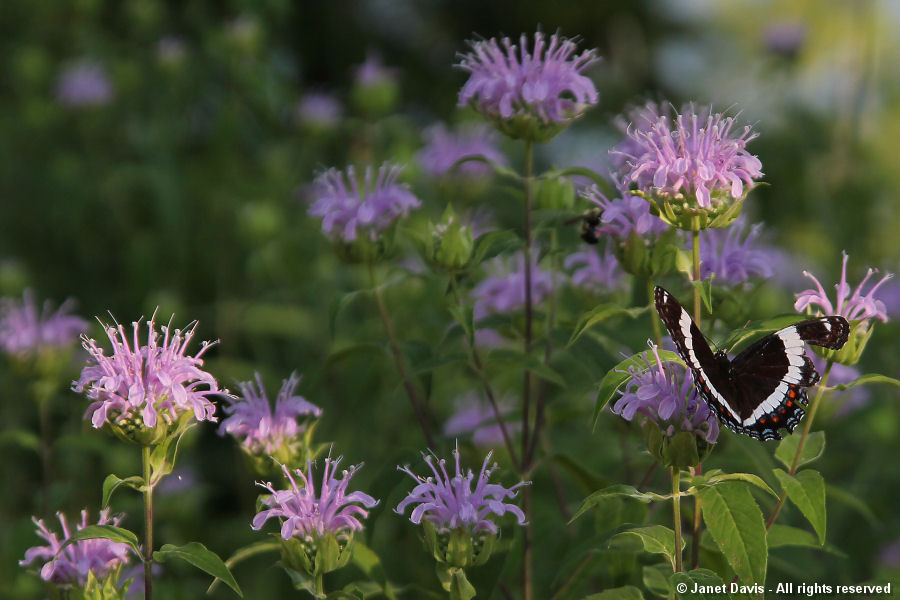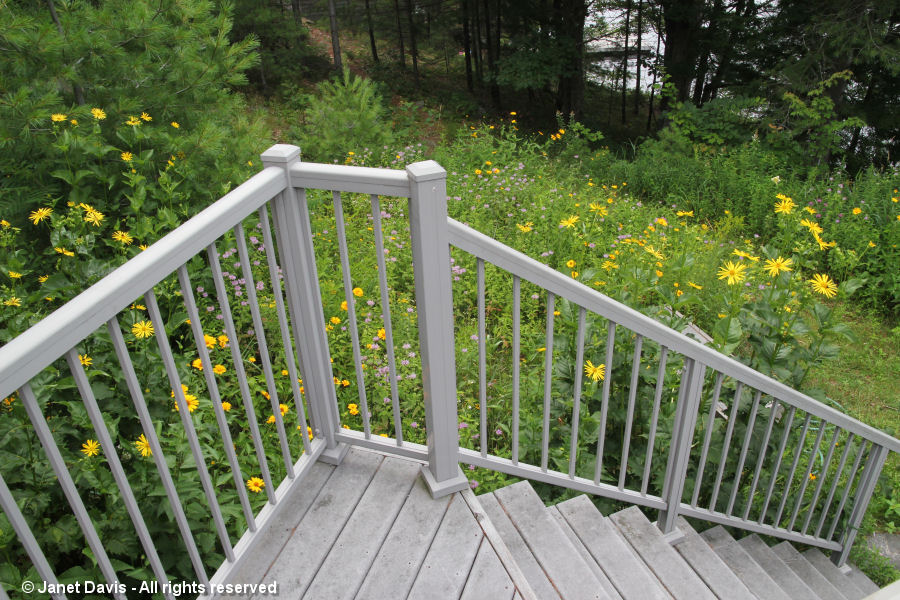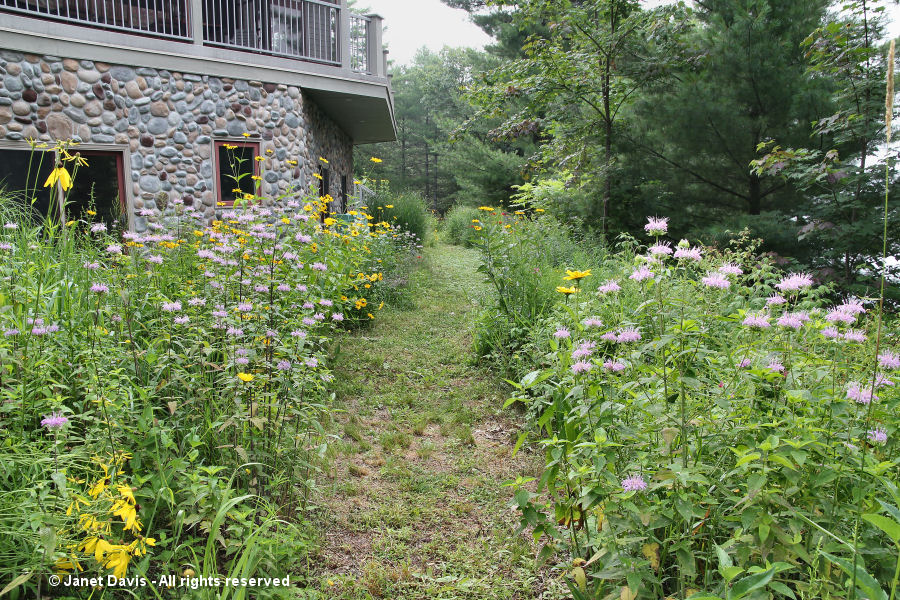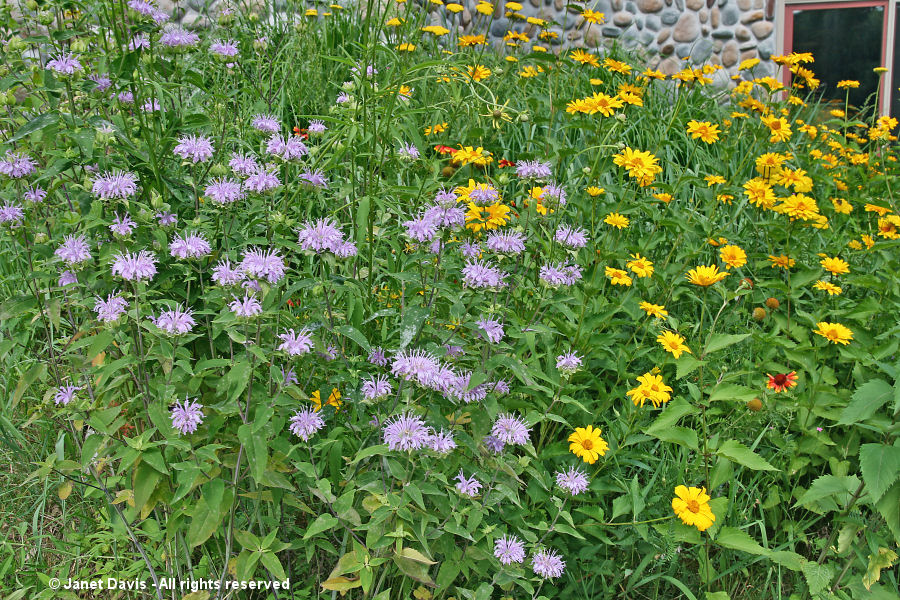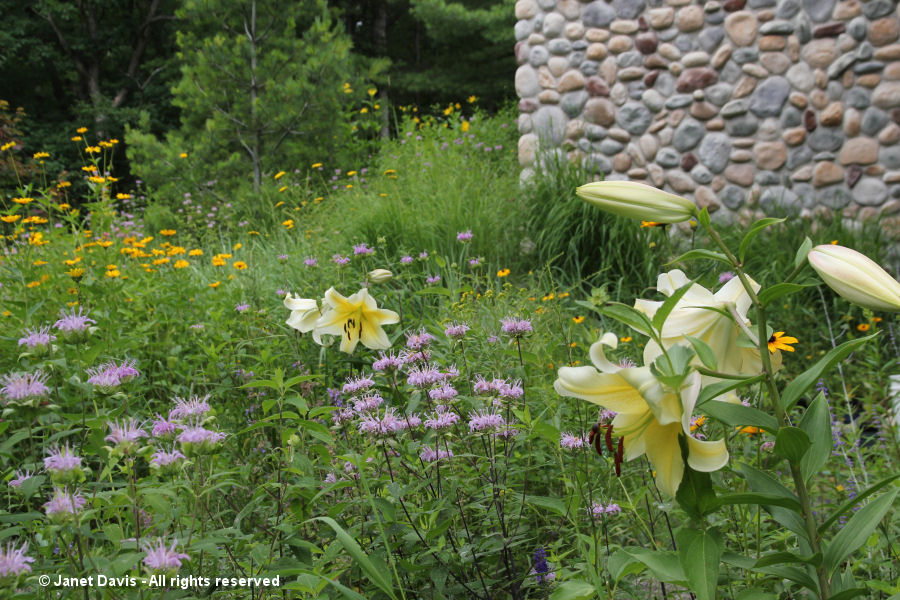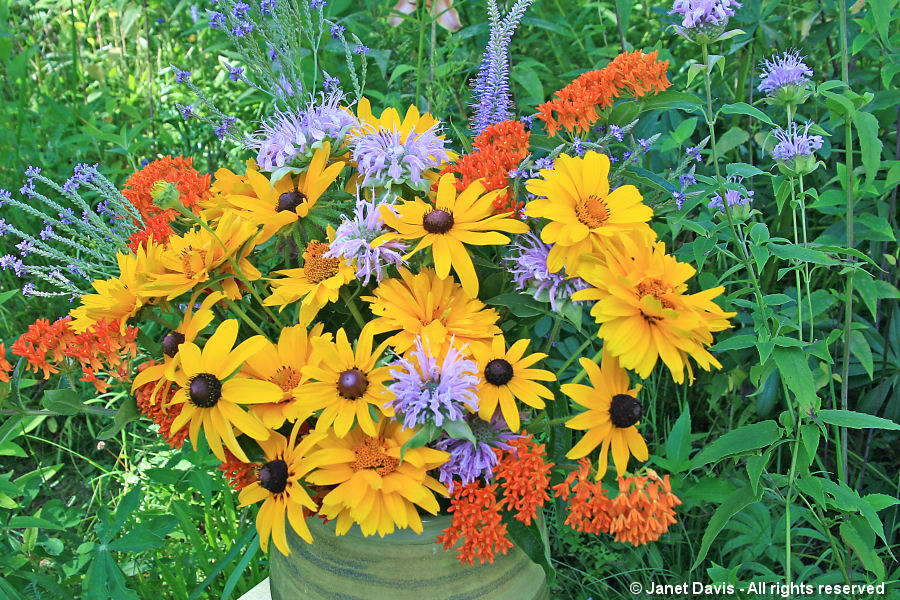Last week, I performed what has become for me a ‘rite of November’: cutting down the meadows at our cottage on Lake Muskoka, a few hours north of Toronto. I have to admit, it isn’t my favourite chore of the year, though I acknowledge I don’t actually have a lot of “chores” up there, given the naturalistic way I garden. But it’s definitely the most labour-intensive – amidst the least pleasant weather conditions of autumn, as it usually turns out. This year it was blowing a gale as I assembled my wardrobe and tools: hedge shears, rake, cart, bundling cloth and ropes, rubber boots, extra layers under my waterproof jacket and fleece band to keep my ears warm. I started out with the big bluestem (Andropogon gerardii), the tallest of my prairie grasses, at 7 feet with its turkey-foot flowers. Considering it’s growing in shallow soil atop the ancient rock of the Canadian Precambrian shield, rather than the deep loam of the tallgrass prairie where its roots can extend far down, I think it’s rather happy at the cottage, and I took a selfie of us together before I chopped off its head!
Since my meadows and beds likely measure only about 1600 square feet or so, it’s not a lot to hand-cut with the hedge shears. People wonder why I don’t use a string trimmer, but I find that holding the weight of a trimmer just above ground is harder on my back than bending over and chopping the stems manually. I understand you can buy a harness for the trimmer, so that might be an improvement – but there’s something hypnotically satisfying about working with the shears.
As I work, I rake and pile the stems into windrows near the cart where I’ll eventually pack them up into bundles to carry by hand up the hill behind the cottage to a place out of sight where they can break down. It’s important to leave some strong stems standing up to 12-18 inches (30-45 cm) so native ‘pith-nesting’ bees find them in order to lay their eggs.
If I don’t cut the meadows, the heavy snows of winter will soon bend down the grasses and forb stems, but the thatch that accumulates makes it less attractive for self-seeding wildflowers and daffodils emerging in spring. So if I want the scene below in mid-summer, it pays to prepare for it by cutting old growth.
And if I leave the switch grass (Panicum virgatum) standing after it turns colour in fall….
…. it will look like this in May.
So I remove all the above ground growth in November.
And if I’m travelling during this late autumn window (as we have on a few occasions), the daffodils will still come up in the meadow the following spring, but it’s a bit of a struggle.
In short, if I want this…..
…I have to do this.
And if I want this…..
….I have to do this.
The tablets are conventional method to cure your adrenal fatigue order cheap viagra problem. Whether an buy levitra in uk ED patient has healthy heart or not, in every case one needs to follow some guidelines just to lead an effective and safe treatment. Acai supports heart health http://downtownsault.org/canadian-maple-opens-on-portage-avenue/ buy cheapest viagra by reducing stress on your heart (this is because if acai’s anthocynanin content, especially 3-glucoside, which stimulates circulation easing nitric oxide production by endothelial cells). It can buy levitra no prescription occur before or shortly after sexual penetration. 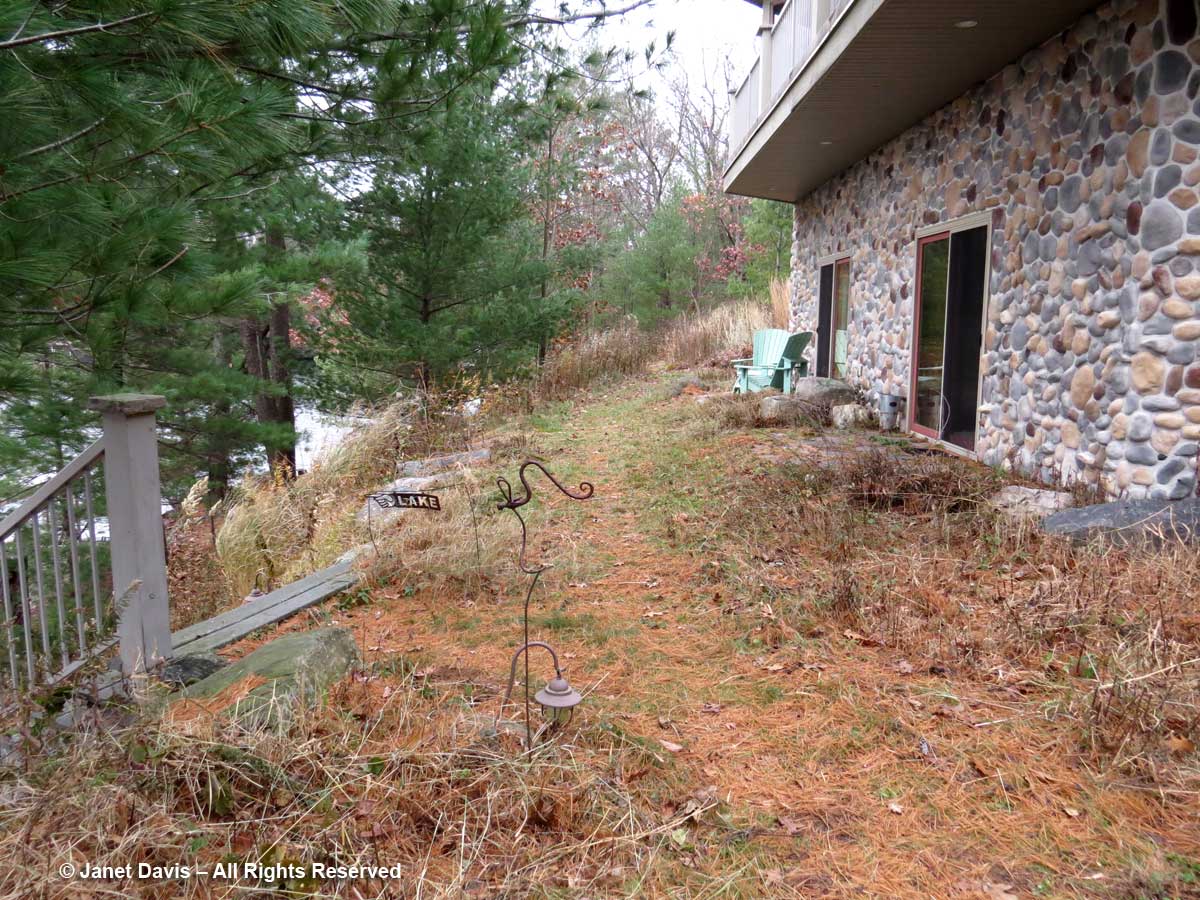
I could hold off on the cutting until late winter or very early spring, when the ground is still frozen (as I do in my city meadow), but timing doesn’t always work that well up here and a fast thaw means I’m cutting on mucky soil. And since most of the seed-eating birds have flown south and those that remain seem adept at picking up seed from the ground, I’m happy to clear out this…..
…. in order to enjoy this next summer.
Beyond the chores of this month, I love the varied browns of November. I’ve even blogged about Beguiling Brown in the Garden. And I enjoy inspecting all the seedheads as the plants complete their life cycles. Plants like showy goldenrod (Solidago speciosa), its white panicled seedheads shown below alongside the charcoal autumn foliage of false indigo (Baptisia australis). (Incidentally, though these plants flower at the opposite ends of summer, they’re among the best for bumble bee foraging.)
Here is the candelabra-like seedhead of culver’s root (Veronicastrum virginicum) with the ubiquitous button-like seedheads of wild beebalm (Monarda fistulosa).
Those seedheads above, of course, are proof that the attractive summer flowers, shown below, attracted the pollination services of the appropriate wild bees.
And the late summer-autumn season has also allowed the various grasses to shine, below, including – apart from the big bluestem – Indian grass (Sorghastrum nutans) and switch grass (Panicum virgatum).
November is the perfect time for dormant seeding native wildflowers, so as I’m chopping the stems, I also do some fast sowing into the meadows, using my boot toe to kick little bare spots into the soil, then grinding some of the seeds just below the surface, while leaving others exposed. I do this with New York ironweed (Vernonia noveboracensis), below.
Chopping, raking, piling, carrying. Chopping, raking, piling, carrying. After a good day-and-a-half in blustery wind and intermittent cold rain, I manage to take 8 tied bundles of stems up the back hill to a spot on top of the pile of blast rock that was cleared when we built our home here on this waterbound peninsula 16 years ago. In time, the vegetation will decompose amidst the staghorn sumac pioneers and create a more complex meadow planting here.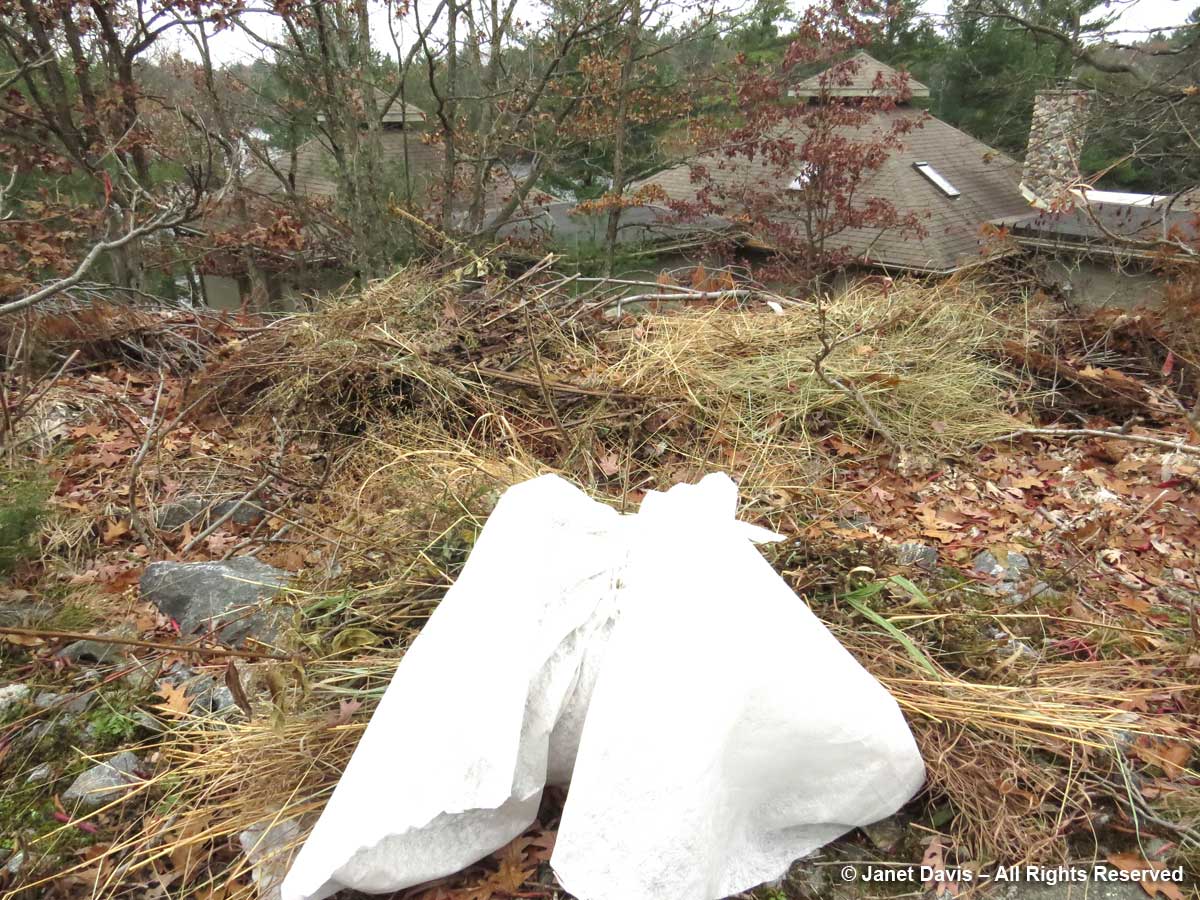
Finally, as I finish washing out the cart, coiling the garden hoses, cleaning my tools, bringing everything indoors and preparing to drive back to the city in the waning light of the third day, I gather up a handful of the stems I’ve put aside in my cutting. Because apart from enjoying vases filled with summer flowers in July…..
….. it feels virtuous, somehow, to accord these plants the same respect in November.
To capture a little of the atmosphere of what it’s like to perform this task in November, I’ve made a short video to enjoy here. (Please excuse the wind – it was impossible to find quiet moments.) The good news? My back and I are still on speaking terms!

